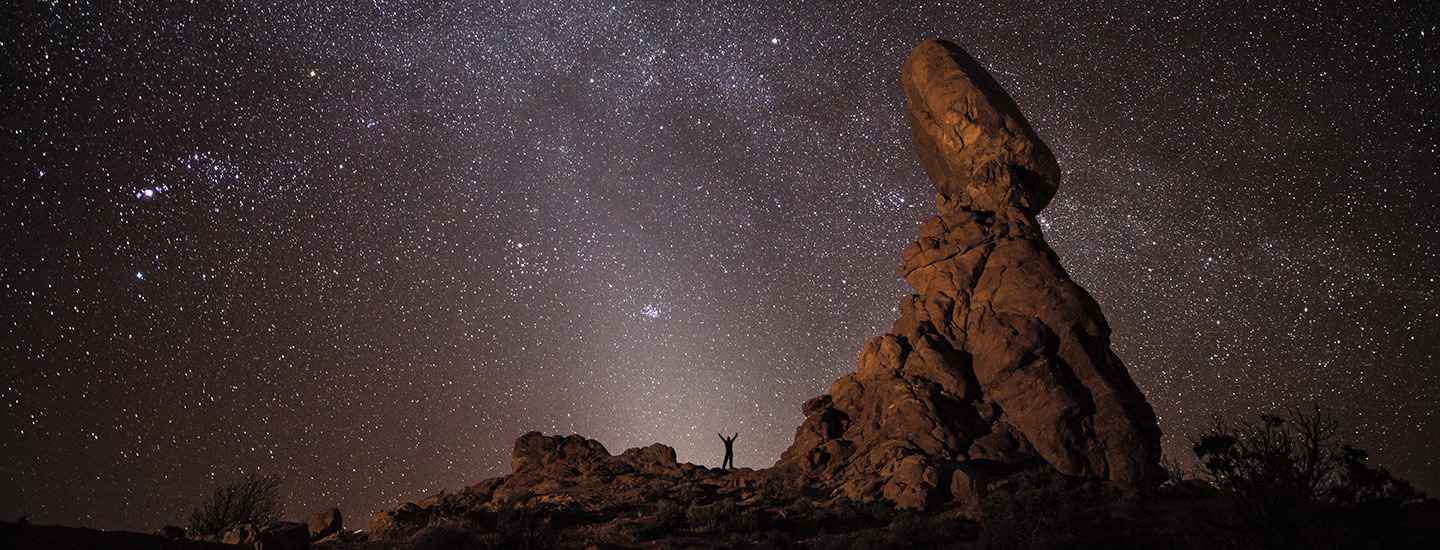Imagine gazing at a dark night sky. It’s covered in thousands of sparkling stars. A band of glittery white light stretches across the heavens. That’s our galaxy, the Milky Way. You can even see other planets!
This view greets lucky visitors at Arches National Park in Utah. At night, it is one of the darkest places on Earth. But most people don’t see such a dazzling night sky. In fact, they don’t see much in the sky at all.
The world is running out of places dark enough to see stars. When the sun sets, people turn on powerful outdoor lights. They light up homes, office buildings, and sports stadiums. The beams often shine even when not needed. This overuse of artificial light is called light pollution.
Light pollution affects the whole planet. That’s why people are taking steps to save the world’s darkest skies.
Imagine a dark night sky. It’s filled with thousands of stars. They create a band of white light. That’s our galaxy. It’s called the Milky Way. You can see other planets too!
You can see this view at Arches National Park. The park is in Utah. At night, it is one of the darkest places on Earth. But most people don’t see a night sky like this. They don’t see much in the sky at night.
The world is losing places that are dark at night. When the sun sets, people turn on outdoor lights. They light up homes and office buildings. They light up sports stadiums. People turn on lights that are not needed. Too much artificial light is called light pollution.
Light pollution affects the whole planet. That’s why people are trying to save the world’s darkest skies.
Imagine gazing up at a dark night sky that is covered in thousands of sparkling stars. A band of glittery white light—our galaxy, the Milky Way—stretches across the heavens. You can even spot other planets! !
This is the view that greets lucky visitors at Arches National Park in Utah. At night, this park is one of the darkest places on Earth. But most people aren’t lucky enough to see such a dazzling night sky. In fact, they see hardly anything in the sky.
The world is running out of places dark enough to see stars. When the sun sets, people turn on powerful outdoor lights. They light up homes, office buildings, and sports stadiums. Even when they aren’t needed, beams of light still shine in many places. This overuse of artificial light is called light pollution.
The whole planet is affected by light pollution. That’s why people are taking steps to save the world’s darkest skies.

